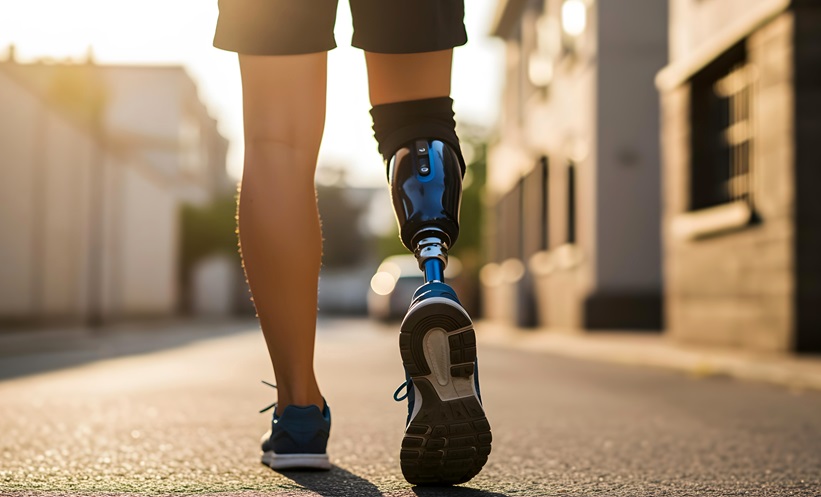FAST-LEARNING, adaptable, wearable technologies are moving out of the realm of science fiction now a research team has designed a computer algorithm that allows a soft wearable exosuit to learn how the wearer moves and responds accordingly with regard to hip extension. The research was carried out at the Harvard John A. Paulson School of Engineering and Applied Sciences (SEAS), Harvard University, Cambridge, and the Wyss Institute for Biologically Inspired Engineering, Boston, both in Massachusetts, USA.
All humans walk differently and as we walk, small corrections and alterations are constantly being made as the body maintains balance and saves energy. This efficient control over human movement has proved to be a major problem for robotics designed to aid functional movement; for example, previous technological walking aids have required extensive manual alterations to be made in order to make the technology useful for the test subject to use. However, this new approach removes this barrier by making use of human-in-the-loop optimisation, which utilises real-time measurements of the user’s physiological parameters, including breathing rate. Based on these measurements, the algorithm can direct the exosuit’s delivery of assistive force to aid hip extension. The use of the exosuit in tandem with the algorithm was shown to reduce metabolic cost by 17.4% compared to the metabolic exertion seen when the suit was not used. Furthermore, this represented a 60% improvement on the team’s previous work.
This algorithmic approach enables movement to be supported in a personalised manner more effectively than hours of manual tinkering with software and hardware by engineers. Dr Conor Walsh, the John L. Loeb Associate Professor of Engineering and Applied Sciences, SEAS, University of Harvard, discussed the benefits that the algorithm has brought to exosuit technology, commenting: “With wearable robot-like soft exosuits, it is critical that the right assistance is delivered at the right time so that they can work synergistically with the wearer.” He added: “With these online optimisation algorithms, systems can learn how to achieve this automatically in about 20 minutes, thus maximising benefit to the wearer.”
Exosuits are hoped to offer a significant range of beneficial possibilities for patients across numerous conditions. The next step in the team’s research will be to focus on more complex applications, including the support of multiple joints, such as the ankle and hip, at the same time.








